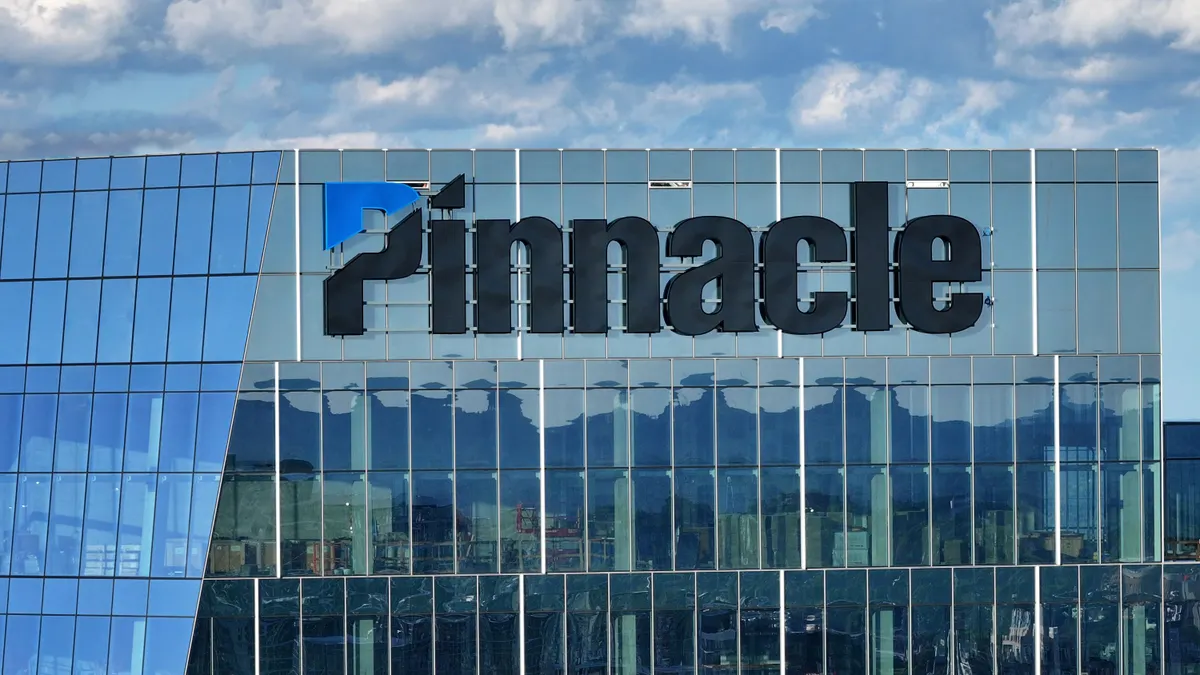Texas remains the most targeted state for bank mergers and acquisitions this year, further bolstered by Fifth Third’s announcement this week that it will acquire Dallas-based Comerica for $10.9 billion.
U.S. bank M&A activity hit a four-year high in the third quarter, with 52 bank deals announced, according to S&P Global Market Intelligence data through Sept. 30. That’s the largest number of quarterly deals announced since the third quarter of 2021, when 59 transactions were reported.
The third quarter’s aggregate deal value was $16.63 billion, the largest since the fourth quarter of 2021, when that figure was $25.26 billion. PNC’s $4.1 billion acquisition of Colorado’s FirstBank accounted for 79% of September's $5.11 billion aggregate deal value.
PNC executives have also left the door open to more M&A.
The third quarter’s aggregate deal value doesn’t factor in Cincinnati-based Fifth Third’s deal to acquire Comerica for $10.9 billion in stock. Announced Monday, it’s the biggest bank deal of the year thus far. The transaction will create the ninth-largest U.S.-based retail bank with roughly $288 billion in assets, the lenders said.
Also announced at the start of the fourth quarter was another Texas deal: Houston-based Prosperity Bancshares’ acquisition of San Antonio-based Southwest Bancshares, in an all-stock transaction valued at $268.9 million.
Population and business growth in Texas has banks eyeing expansion opportunities, leading the state to experience a flurry of bank M&A activity this year. Columbus, Ohio-based regional Huntington Bank bought Dallas-based Veritex Holdings for $1.9 billion; Kalispell, Montana-based Glacier Bank is acquiring Mount Pleasant-based Guaranty Bancorp in a $476.2 million deal; Denver-based National Bank Holdings is buying Dallas-based Vista Bancshares in a $369.1 million deal.
Fifth Third was one of the potential buyers suggested in July by Comerica activist investor HoldCo Asset Management, which urged $78 billion-asset Comerica to sell itself to a larger bank after making “disastrous decisions” and having “objectively poor performance.” Comerica executives highlighted revenue-boosting efforts in September, and also pledged to take a hard look at expenses.
Fifth Third’s size, diversity and strength “should render most of [Comerica’s] legacy issues moot,” Piper Sandler analyst Scott Siefers wrote Monday.
“To be sure, [Fifth Third] now has integration risk from a large deal, and the onus is on management to prove that it can grow where [Comerica] could not,” Siefers said.
Fifth Third CEO Tim Spence told Reuters on Tuesday that Comerica CEO Curt Farmer called the Cincinnati lender a few weeks ago to discuss a deal, which the banks have projected to close in the first quarter of 2026.
Bank deal activity this year has been bolstered in part by faster deal approval timelines from regulators under the Trump administration. Huntington said Friday it had received all regulatory approvals to acquire Veritex, after announcing the deal July 14.
M&A activity is expected to continue, given the long-term consolidation trend and pressure on smaller lenders related to technology expenses and succession challenges. And regional banks, for their part, see the need for greater scale to take on the top U.S. lenders, resulting in more deals at a time when regulators appear more amenable to them.
Additionally, other investors may feel emboldened by the activist’s success in nudging Comerica to find a buyer and “steer their gaze to other names that have under-performed, as well, generating a newer and higher sense of accountability,” Siefers wrote.
As for who could be the next M&A target, Memphis, Tennessee-based First Horizon “is the most obvious,” Brian Finneran of Truist Securities wrote Tuesday.
“We would put [First Horizon] at the top of potential takeover targets,” D.A. Davidson analyst Peter Winter wrote in a September note.
First Horizon, which has about $82 billion in assets and a 12-state footprint mainly in the South, was set to be acquired by Canadian bank TD in 2022, but that agreement was terminated the following year.
Analysts have also mentioned Texas targets Cadence ($52 billion in assets) and Prosperity ($38.4 billion), or Stamford, Connecticut-based Webster Bank, which has about $82 billion in assets.
Investors’ mindsets have “shifted to assuming that any bank saying they’re open to M&A is going to try to do a deal,” Finneran noted.
A First Horizon spokesperson declined to comment. Spokespeople for Cadence, Prosperity and Webster couldn’t immediately be reached.













